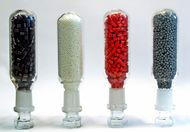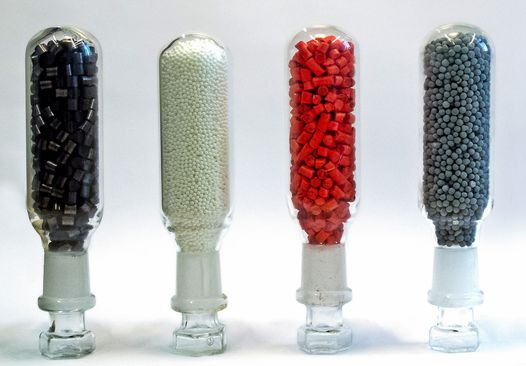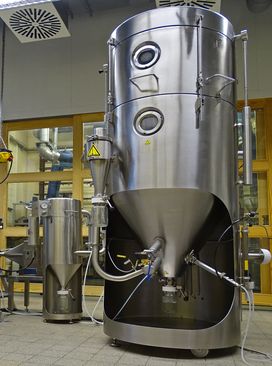Asia
EMEA

LANXESS Canada Contacts
Contact our Sites in Canada
Media Inquiries
General Inquiries
Please click here to e-mail LANXESS Canada with product inquiries and general requests.
Global Press Releases
2018-12-18
Expertise in efficient, selective and safe reactions
100 years “Catalyst Laboratory” in Leverkusen
Cologne – The “Catalyst Laboratory” was founded 100 years ago in Leverkusen – where the CHEMPARK is located today. At that time, the scope of activities was outlined as “work on catalytic reactions involving organic substances”. This laboratory now belongs to the specialty chemicals company LANXESS and operates as a cross-divisional competence center for catalysts and their applications.
On the occasion of the anniversary ceremony held at LANXESS in Leverkusen on December 17, 2018, Dr. Dirk Müller, Head of the Global Technology & Innovation team within the Production, Technology, Safety & Environment Group Function, emphasized the importance of catalysis for the chemical industry: “Experts estimate that 80 to 90 percent of all industrial chemical synthesis routes today contain at least one catalyzed reaction step. Catalysts ensure that the desired products are formed under mild conditions, safely, selectively and in high yields. Catalysis is therefore a key factor for energy and resource efficiency. It makes a decisive contribution to sustainability and cost-effectiveness.”
A catalyzed chemical reaction is characterized by increased reactivity and/or selectivity. The catalyst emerges from the reaction unchanged, i.e. it is not consumed itself. Industrial catalytic reactions are inspired by metabolic processes in all living organisms taking place under the influence of enzymes.
From laboratory to production scale
The catalyst laboratory owes its foundation to the growing industrial importance of heterogeneous catalytic reactions in which the catalyst and reacting substrates are present in different phases, e.g. solid/liquid and solid/gas systems. According to a historical report, interest was initially focused on “catalytic oxidations, reductions, hydrogenations, dehydrogenations, exchange and addition reactions”.
For many decades, the laboratory, together with the catalyst production plant made important contributions to the development of highly productive catalytic processes. Many new and improved catalysts were invented, manufactured and further developed here. Numerous operating instructions, recipes and patents bear witness to this.
Even today, the employees of the catalyst laboratory play a major role in ensuring that heterogeneous catalytic processes run as efficiently as possible in many production areas at LANXESS. For that purpose, they develop, optimize and characterize catalysts for new and existing processes and advise users on their procurement and on the selection and instruction of suitable manufacturers. If necessary, they also accompany the production process. Quality control of the catalysts, problem-solving operational support and process development are also part of their range of tasks. “Since we no longer produce catalysts ourselves today, we work together with competent suppliers to whom we provide precise recipes. Especially in the initial phase of the cooperation, the quality of the catalysts supplied has to be precisely controlled so that our production plants can produce the best possible products in a reproducible manner,” explains Paul Sprenger, head of the catalyst laboratory.
The performance of such catalysts depends not only on the chemical composition, but also on physical properties such as the shape of the particles or their active surface. For example, solid catalysts can have different forms of appearance. These include powders, pellets or extrudates made from the pure catalyst material, but also ceramic shapes as supports which are impregnated or coated with the catalytically active substance.
Optimized catalysts for established and new processes
For decades, the catalyst laboratory has been intensively involved, for example, with catalyzed reactions within the aromatic network. However, it not only ensures continuity in ongoing production and in established processes – new challenges also have to be mastered. A current example of this is the development of a specially modified oxidic catalyst that allows the selective alkylation of an aromatic starting compound at the beginning of a longer synthesis sequence. “A total of about five years have passed since the first experiments and optimization in the catalyst laboratory were turned into a functioning technical process that already produced around 100 metric tons of product in pilot scale. The next step is now the large-scale implementation,” says Sprenger, describing the path from the laboratory to the plant. Even in the laboratory phase, it is important to keep an eye on the specific requirements of industrial processes. “Even minor impurities in the starting materials – not unusual in technical substances – can have an enormous effect on the productivity, selectivity and service life of a catalyst. In catalyst production itself, each step must also be considered individually and, if necessary, the sequence of steps must be varied,” Sprenger explains the task which can be complex from time to time.
Forward-Looking Statements
This company release contains certain forward-looking statements, including assumptions, opinions, expectations and views of the company or cited from third party sources. Various known and unknown risks, uncertainties and other factors could cause the actual results, financial position, development or performance of LANXESS AG to differ materially from the estimations expressed or implied herein. LANXESS AG does not guarantee that the assumptions underlying such forward-looking statements are free from errors nor does it accept any responsibility for the future accuracy of the opinions expressed in this presentation or the actual occurrence of the forecast developments. No representation or warranty (expressed or implied) is made as to, and no reliance should be placed on, any information, estimates, targets and opinions, contained herein, and no liability whatsoever is accepted as to any errors, omissions or misstatements contained herein, and accordingly, no representative of LANXESS AG or any of its affiliated companies or any of such person's officers, directors or employees accept any liability whatsoever arising directly or indirectly from the use of this document.
LANXESS is a leading specialty chemicals company with sales of EUR 9.7 billion in 2017 and about 19,200 employees in 25 countries. The company is currently represented at 73 production sites worldwide. The core business of LANXESS is the development, manufacturing and marketing of chemical intermediates, additives, specialty chemicals and plastics. LANXESS is listed in the leading sustainability indices Dow Jones Sustainability Index (DJSI World and Europe) and FTSE4Good.
- Gallery






